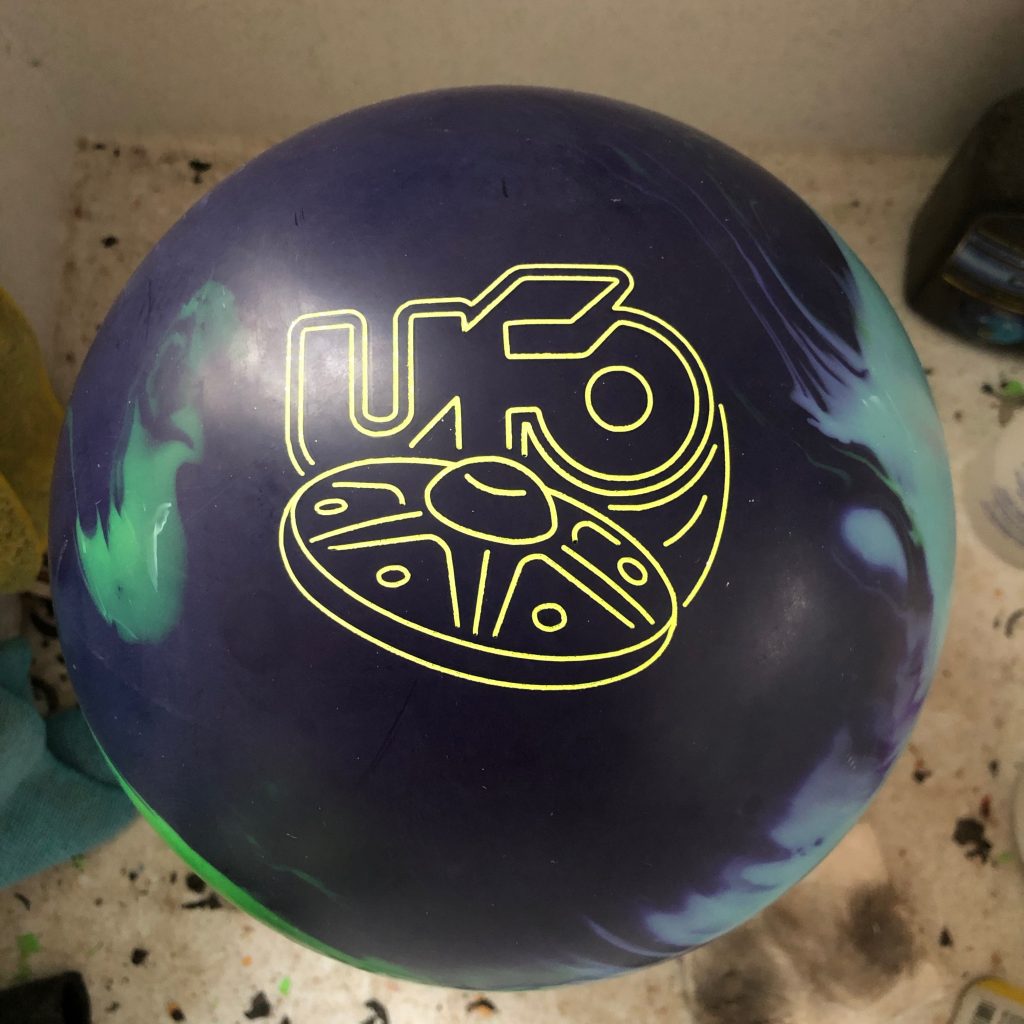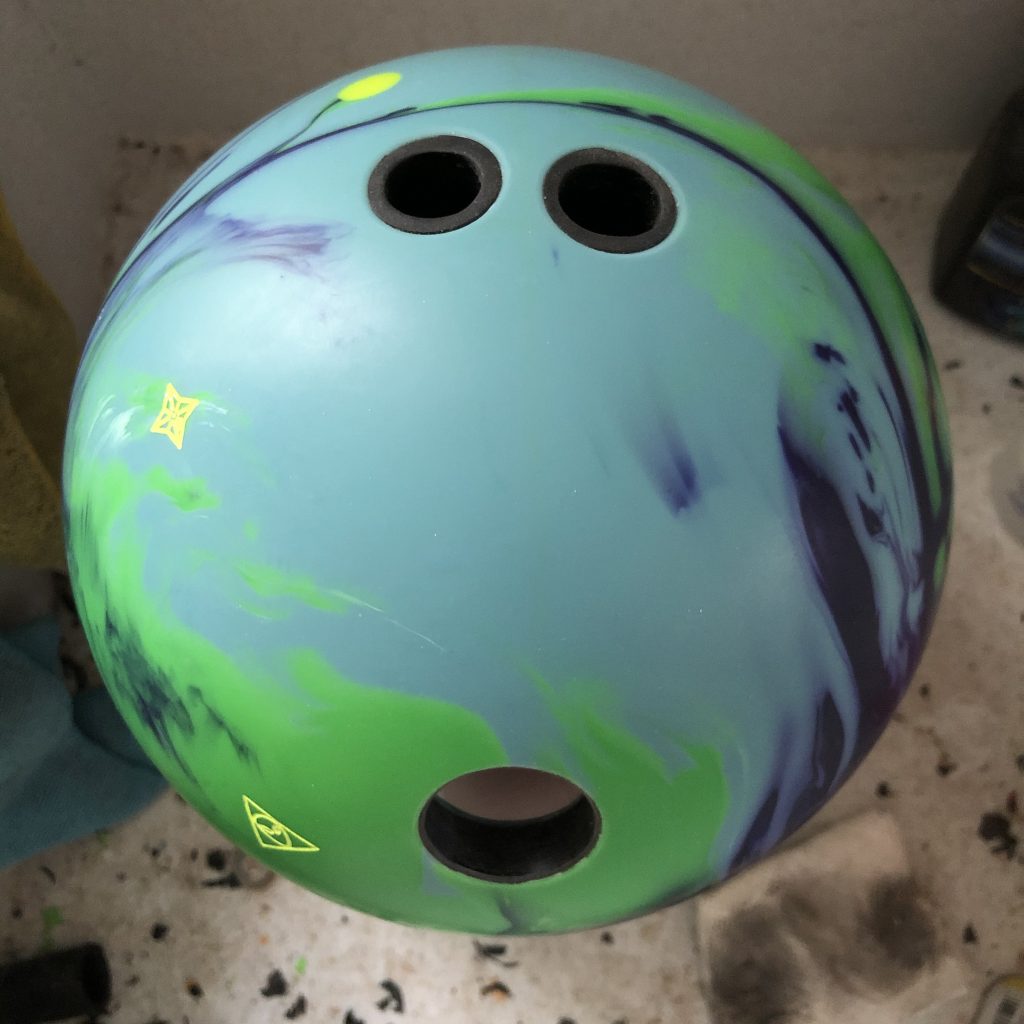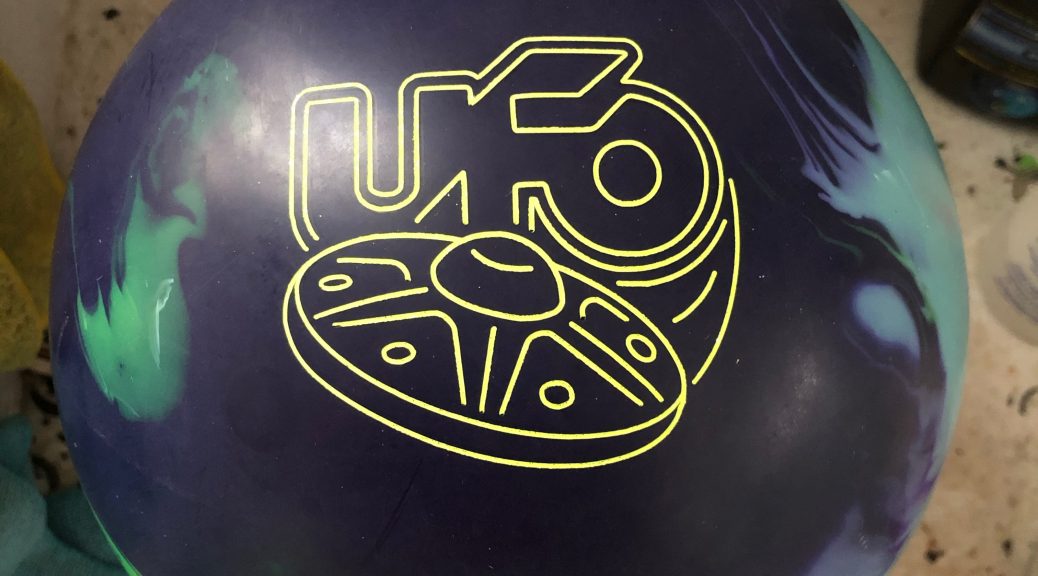Can It Be Out Of This World…


Let me introduce our new partner Haley’s Pro Shop. A big thank you to Jeff Miller and Ron Hoppe. Don’t forget to check out Haley’s Pro Shop for world class drilling and coaching!
First Impressions
The UFO acquits the big ball slot very nicely.
Tamer Elbaga (Lefty)
Style: Tweener
RPM: 375 rpm
PAP: 5 & 3/8 up
Average Speed: 18.5 mph (at release)
Axis tilt: low
Axis rotation: medium/high
Test Equipment: 15 Pounds
Layout: 45 x 4.75 x 45
Sean Jensen (Righty)
Style: Power player
RPM: 475 rpm
PAP: 5 1/2 & 1/4 up
Average Speed: 18.5 mph (at release)
Axis tilt: low
Axis rotation: medium
Test Equipment: 14 Pounds
Layout: 60 x 5 x 40
Bryan Hoffman (Righty)
Style: Higher Tilt Stroker
RPM: 280 rpm
PAP: 4 1/4 & 1/8 down
Average Speed: 17.5 mph (at release)
Axis tilt: high
Axis rotation: medium
Test Equipment: 15 Pounds
Layout: 65 x 4.5 x 35
Intent: Medium roll with a slow transition at the breakpoint
“Keep in mind that coverstock accounts for 70% of ball reaction, but the core creates the dynamic shape of the reaction. Your driller will alter the shape to suit your game.”
Test Pattern:
THS: 40ft, 23ml
Sport: 2019 Scorpion 42ft, 30.55 ml, 2.12:1 ratio
Value
B+
This is a little above average for a high end solid asymmetric ball when comparing versatility with price.
Specs
The Roto Grip UFO uses the E.T.™ Core = Equalizer Technology™ (Asymmetrical) core inside the MicroTrax-S20™solid coverstock.
15 pound = RG of 2.52, diff of .054, mb of .016
14 pound = RG of 2.52, diff of .054, mb of .016
Coverstock finish: 2000 grit abralon
Overall
THS: B+
Sport: B+
Roto Grip replaces the Halo with the new UFO. Bottom line is while this rolls different, I think we will all be fine moving on from the Halo line. Nothing negative about the Halo but most will find the UFO quite easily fulfilling the big asym spot. This one has even more Nano so the cover is a bit stronger. Don’t think you will really notice that much of a difference to be honest. The more noticeable difference will actually be the core shapes. Are you surprised to see a light bulb shape more or less? Well you really shouldn’t be. It works. I think you will probably find that historically, the “rounder” shaped cores have been the most versatile and if you peruse the Roto cores in general, you will find they don’t stray very far from that formula. The cavities are added to basically make it asymmetric. I love that the core specs are identical between 14, 15, and 16 pound equipment.
In terms of ball motion, the most notable and enjoyable thing is that it isn’t as forward as the Halo. What I mean is many asym balls have a bit of a strong hook setting motion which means the ball tends to lose just a touch of angle downlane when compared to symmetrics that might feel a bit more continuous. The UFO still has the strong asym transition but does feel a bit more continuous than the blocky Centrum core. This may not be night and day noticeable for every bowler but something I noticed. The easiest way to recognize this is when you miss out, the Halo is more likely to quit on you than the UFO.
The cover is strong enough for the heaviest volumes but still pretty usable on house. This is something that I’ve struggled with at times where very strong balls become overkill for typical house shots for me. For me, the big thing with this ball is that it always wants to “go” downlane. Especially on tougher stuff, I like balls that have motion that I can control as opposed to trying to make a ball shape. The UFO shapes itself and a lot of bowlers will enjoy that.
I tried to play different areas of the lane. With this big piece, I seemed to have more room out than in. It still responded to friction. If I pinched it, as usual it won’t hold. If I over-rotated it, it hit flat. These are user error reactions. But as you will see the ball was playable from more direct to 4th arrow. This is a really good shape and strength complimenting the Storm Physix when you think about putting an arsenal together.
Bryan was next. As pretty typical for him, most strong balls on house will play between 2nd and 3rd arrow. Here you will see the pronounced aggressive move downlane. In the end, his motion while a bit less board coverage than I saw the same characteristics. The aggressive nature of the ball meant good drive on most shots. Spending a little time on the errors, misses downlane can push for bucket type leaves. Misses at the bottom of the swing can lead to the same leaves. There is a clear limit to how much belly he can use. Bryan still uses his Halo as the strong ball in the bag and you can see he actually has a touch more room to belly the ball with the Halo. It may be that once he starts giving the pocket away a touch, the UFO just seems to lose steam for him. So even with the less forward roll, he hasn’t gained anything over the Halo. Yes they are different shapes slightly but they have the same use case.
Despite being a huge piece, Sean liked this ball. It’s a big ball he could see himself having just “in case”. This is due to the way the UFO shapes. The UFO doesn’t feel super early but it has a strong shape off the pattern. Since Sean prefers to see shape down lane, this felt usable and useful as a potential arsenal ball. Generally, I find people mistake board coverage for strength. Strong balls tend to read earlier and hence are smoother. Typically that’s a recipe for less board coverage, not more. But where sometimes huge pieces feel like snow tires where they have traction but limited downlane performance, the UFO is almost like a good all-season which errs more towards “mixed conditions” vs all-out traction.
Sport Shot
We tested on the 30ml 42ft Scorpion pattern. This high volume is more ideal for the UFO. I might argue this may even be a touch too much ball for this pattern but it will all depend on the bowler. As I did previously, I play different zones to show off the ball motion. There is a shot from more direct near the second arrow. This might be the ideal zone for me on this pattern. It’s playable but something like the Phaze II might be a bit more usable from there. Just a little less ball offering a bit more continuation. The next zone around 3rd arrow seems a bit of no-man’s land and I’ve seen this before. I start to get into not only the higher volume but the flatter part of the pattern. This would be breakdown zone. As I start to edge closer to the 4th arrow, it plays a little easier. It’s flatter there but you also play closer to the pocket and the strength of the ball slows it down.
Bryan is playing very direct and that is also not unexpected. 10 to 10 is about the only play but it looked really good. Of course, bowler makes a good shot, bowler is rewarded with strikes. The UFO had a really nice shape from there. He definitely had some room to play the pattern, not necessarily miss room. He could play 7 to 7 and the ball also had really great drive from there. Just to show you how tight the pattern is, if he hits 10 to 8, he’s going to leave a bucket. 10 to 7 and he’s not touching the headpin. Balls will not save you from having to hit your marks. With his Halo, again, the shape is different but playing identical lines. In the one instance you can see him hit 11 to 9 with the Halo and leaves the pocket 7-10. He could go 12 to 10 with the UFO and strike. Bottom line ins it’s a very minor difference, pick one.
If you’ve been looking for a big piece from Storm or Roto Grip and didn’t pick up a Halo or your Halo is out of steam, look no further than the UFO.
Final Thoughts
The Roto Grip UFO is the quintessential big solid asym. This is the type of motion I seek out from a big asym. One that always naturally wants to shape due to its strength rather than run out of steam when it sees too much friction or become too forward. Roto Grip asyms have generally been pretty good for this shape and I would say this is a step up in that category compared to the Halo.


